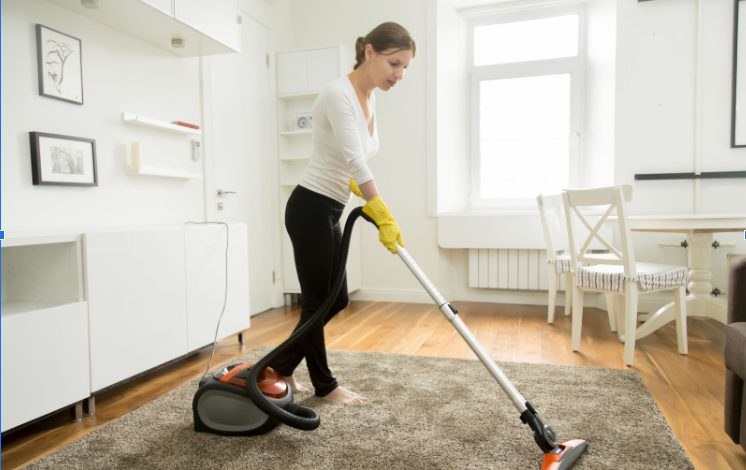The Ultimate Guide to Carpet Cleaning: Tips for a Cleaner, Healthier Home

Carpets bring warmth, comfort, and style to any home—but they also attract dirt, dust, pet hair, allergens, and bacteria. Over time, even the cleanest-looking carpet can become a breeding ground for pollutants that affect your indoor air quality and overall well-being.
That’s why regular carpet cleaning is not just about appearances—it’s essential for maintaining a healthy living environment. In this ultimate guide, we’ll walk you through everything you need to know about carpet cleaning: why it matters, how often to do it, what methods work best, and expert tips to keep your carpet spotless and fresh year-round.
Why Carpet Cleaning is Crucial for Your Health
Many people vacuum regularly but neglect deep carpet cleaning in Northern Beaches. However, vacuuming alone doesn’t remove the deep-seated dirt, dust mites, mold spores, and pet dander that get embedded in the carpet fibers.
Here’s why proper carpet cleaning should be part of your home maintenance routine:
- Improves indoor air quality by removing allergens and airborne particles.
- Reduces the risk of respiratory issues like asthma and allergies.
- Extends the lifespan of your carpet by preventing fiber wear.
- Eliminates bacteria, mold, and odors caused by moisture or spills.
- Enhances overall home cleanliness, especially in high-traffic areas.
- How Often Should You Clean Your Carpets?
The frequency of carpet cleaning depends on various factors such as household size, presence of pets, foot traffic, and indoor habits.
Here are some general guidelines:
- Vacuuming: At least once a week, or 2–3 times in high-traffic areas.
- Spot cleaning: Immediately after a spill or stain occurs.
- Deep cleaning: Every 6–12 months for most households.
- With pets or allergies: Every 3–6 months.
See also: Homeowner’s Checklist: Tips to Preserve Your Property
Neglecting regular cleaning can allow dirt and stains to become permanent, making restoration more difficult and costly.
Different Types of Carpet Cleaning Methods
Not all carpet cleaning methods are created equal. Each has its benefits and is suitable for different carpet types and household needs.
Let’s explore the most popular carpet cleaning techniques:
1. Steam Cleaning (Hot Water Extraction)
Steam cleaning uses high-pressure hot water mixed with a cleaning solution, injected deep into the carpet fibers and then extracted along with dirt and debris.
Best for: Most synthetic carpets, homes with pets or allergies.
Pros:
- Deep cleans and sanitizes
- Removes embedded dirt and allergens
- Environmentally friendly (minimal chemicals)
Cons:
- Long drying time (6–12 hours)
- May not be suitable for delicate fibers
2. Dry Carpet Cleaning
Dry cleaning involves spreading a dry compound (usually powder-based) onto the carpet, which binds with dirt. The compound is then vacuumed out.
Best for: Delicate or moisture-sensitive carpets, quick cleaning needs.
Pros:
- Fast drying time
- Low moisture, safe for wood floors beneath
Cons:
- Not as deep-cleaning as steam
- May leave some residue if not vacuumed properly
3. Carpet Shampooing
Shampooing involves applying a foamy cleanser that’s scrubbed into the carpet with a rotating brush, then extracted with water.
Best for: Heavily soiled carpets in high-traffic areas.
Pros:
- Effective for tough stains and odors
- Affordable and widely available
Cons:
- Longer drying time
- Can leave behind soap residue
4. Bonnet Cleaning
Bonnet cleaning uses a rotary floor machine with a cleaning pad soaked in solution. It “buffs” the surface of the carpet.
Best for: Commercial settings or surface refreshes.
Pros:
- Quick and easy
- Great for short-term appearance boost
Cons:
- Superficial cleaning (doesn’t remove deep dirt)
- Not suitable for deep sanitizing
5. Encapsulation Cleaning
Encapsulation uses a polymer-based detergent that traps (or encapsulates) dirt in a crystal form. These crystals are then vacuumed away.
Best for: Commercial carpets and maintenance cleaning.
Pros:
- Fast drying
- No sticky residue
- Eco-friendly
Cons:
- Less effective for very dirty carpets
- Requires specialized equipment
Carpet Cleaning Tools and Products You’ll Need
If you’re cleaning carpets yourself, you’ll need the right tools and products to do the job effectively.
Here’s a checklist of essentials:
- High-suction vacuum cleaner
- Carpet shampoo or cleaning solution (eco-friendly or pet-safe preferred)
- Steam cleaner or carpet extractor (can be rented or bought)
- Spot remover for stains
- Carpet brush or scrubber
- Absorbent microfiber cloths or paper towels
- Baking soda (for deodorizing)
Always check your carpet manufacturer’s care guidelines to avoid using incompatible cleaners or methods.
Step-by-Step Guide: How to Clean Carpets at Home
Follow this simple, step-by-step process for DIY carpet cleaning at home:
Step 1: Remove Furniture
Move all furniture and items off the carpet for a clear working space. Use furniture sliders to avoid scratching floors.
Step 2: Vacuum Thoroughly
Use a high-powered vacuum to remove loose dust, crumbs, and pet hair. Vacuum in multiple directions to lift trapped particles from all angles.
Step 3: Pretreat Stains
Apply a carpet stain remover or a DIY mixture of vinegar and water directly onto spots and let it sit for 5–10 minutes. Blot (don’t rub) with a cloth.
Step 4: Choose and Apply Cleaning Method
Depending on your chosen method (steam, shampoo, dry powder), follow these guidelines:
- Steam cleaner: Fill with hot water and detergent. Run slowly over the carpet.
- Shampoo machine: Scrub the carpet in sections and extract as much water as possible.
- Dry cleaning powder: Sprinkle evenly, let sit, then vacuum thoroughly.
Step 5: Rinse (If Applicable)
For steam or shampoo cleaning, rinse with clean water to remove detergent residue. This prevents sticky buildup that attracts dirt.
Step 6: Let It Dry Completely
Allow carpets to dry for several hours. Improve airflow with open windows or fans. Avoid walking on the carpet until it’s fully dry to prevent dirt transfer.
Step 7: Vacuum Again
Once dry, vacuum again to lift fibers and remove any leftover debris or crystals (in case of dry cleaning).
Carpet Stain Removal Tips
Certain stains need special attention. Here are quick solutions for common carpet stains:
- Red wine: Blot immediately. Apply baking soda and club soda, then blot again.
- Coffee: Mix vinegar, water, and a drop of dish soap. Blot with a cloth.
- Pet urine: Use an enzymatic cleaner to break down odor-causing bacteria.
- Grease: Sprinkle cornstarch or baking soda. Let sit, then vacuum and blot with detergent.
- Ink: Dab with isopropyl alcohol (do not rub) and blot with a dry towel.
Always test cleaning solutions on a hidden area first to ensure no discoloration or damage.
Carpet Maintenance Tips Between Cleanings
Keep your carpets cleaner for longer with these simple habits:
- Place mats at entryways to trap dirt before it reaches your carpet.
- Remove shoes indoors to reduce tracked-in grime.
- Vacuum regularly, especially in high-traffic areas.
- Use area rugs in zones that experience heavy use (like hallways or under dining tables).
- Attend to spills immediately—the faster you treat them, the better the outcome.
When to Hire a Professional Carpet Cleaner
While DIY cleaning works well for maintenance, there are times when a professional carpet cleaner is the better choice:
- Your carpet has deep stains, odors, or water damage.
- You haven’t deep cleaned in over 12 months.
- You’re preparing to sell or rent your home.
- You own expensive or delicate carpet fibers (like wool or silk).
- You have allergies and need a deep allergen removal service.
Professionals use industrial-grade equipment and know how to clean without over-wetting or damaging the material.
Final Thoughts
Carpet cleaning isn’t just a cosmetic task—it’s an essential part of keeping your home healthy, hygienic, and inviting. By learning the best practices and cleaning methods, you can prolong the life of your carpet, improve indoor air quality, and maintain a comfortable environment for your family.
Whether you choose to clean it yourself or bring in a professional, regular carpet maintenance pays off in both cleanliness and cost savings.





